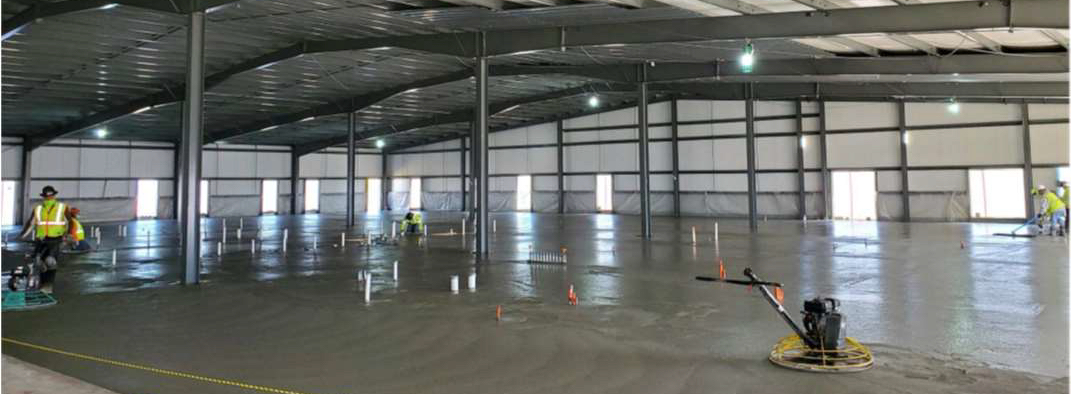Sources: Ozinga Bros. Inc., Mokena, Ill.; CP staff
Ozinga Ready Mix Concrete is assisting Meta and University of Illinois at Urbana-Champaign (UIUC) researchers on a concrete schedule for the carbon-minded social media giant’s DeKalb, Ill. data center. The producer has demonstrated the potential to build on the low carbon metrics of mix designs generated from an artificial intelligence model that Meta and university researchers developed around sustainability characteristics and compressive strength criteria.

Researchers trained the AI model with a UIUC Concrete Compressive Strength data set and the Cement Sustainability Initiative Environment Product Declaration tool. Ozinga RMC refined model mix designs based on its expertise as a 94-year old industry practitioner, local material availability, and target strength development under the cold weather conditions expected at the data center site, located due west of Chicago. The results have yielded more efficient mix production, while ensuring significant carbon savings and overall mix performance.

The final mix designs have been used on 40,000 square feet of concrete slabs for the Meta data center guardhouse and construction management team office. Tests confirmed that the concrete exceeded 7- and 28-day strength requirements, while exhibiting a carbon impact 40 percent lower than the regional benchmark for slab mix designs. In addition to those mixes, Ozinga RMC is supplying concrete from its CarbonSense line—offering varying degrees of carbon reduction across multiple strength classes—for other DeKalb data center pours.
At a Meta media briefing, Ozinga RMC Vice President of Innovation and Market Development Ryan Cialdella explained how the circumstances involving the company and university researchers “enabled us to work on this project starting with the end user down to the general contractors and concrete contractors, come together to tweak the proposed mixes from UIUC’s AI model and receive buy-in from all the stakeholders. We can continue to use the field data, feed it back through the AI model and refine it to push the boundaries on carbon reduction.”
“The collaboration between our research and development laboratory, the University of Illinois and the Meta team is a testament to the realities we’ve created that leave a greener footprint for generations to come,” added President Justin Ozinga.
Ozinga RMC’s low-carbon concrete mix design competencies dovetail priorities attending Meta data center construction. In a new “Tech at Meta” blog post, the company cites last year’s attainment of net zero emissions across its operations—owing to renewable energy procurement for offices and data centers. “We are now turning our attention to our ambitious goal to achieve net zero emissions across our value chain by the end of 2030,” note Meta USA’s Julius Kusuma and Amruta Sudhalkar, who are tracking the AI model and DeKalb data center concrete. “This commitment includes addressing the indirect environmental impacts of our business, such as from the embodied carbon found in our buildings. Embodied carbon includes the upstream and downstream emissions from the manufacturing, transportation, maintenance, replacement, and decommissioning of building materials. Among these building materials, concrete is a major contributor to the embodied carbon of our data centers.”